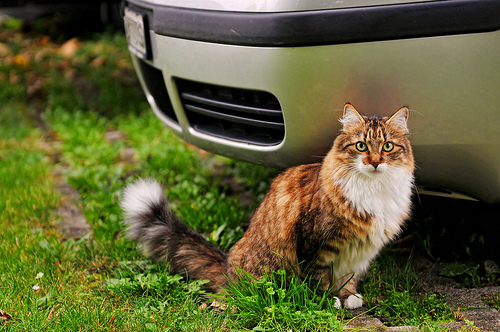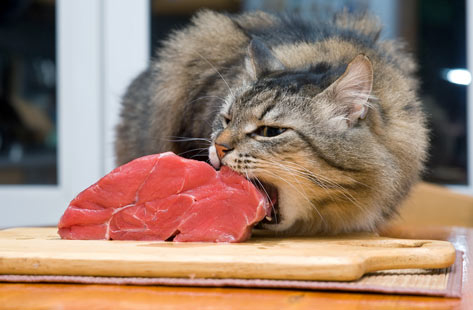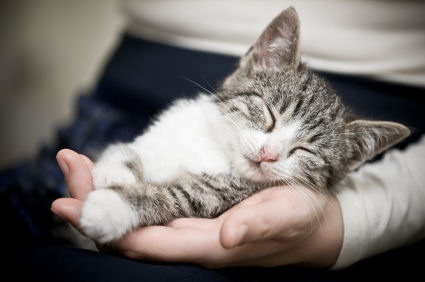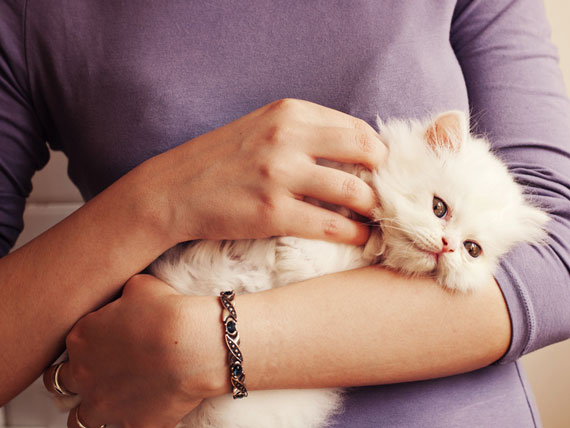
Cats are hunters by nature and unfortunately not able to discriminate between harmful prey and non harmful prey. There are poisonous snakes throughout the world and it would be too hard to list poisonous snakes country by country so this article will aim to provide general information on snake bites, but not snake species specific to any one country.
The majority of snake bites occur on the cat's head, neck and legs. Bites on the body can happen, and tend to be more dangerous.
What is the difference between a venomous and non-venomous snake?
A venomous snake has elliptical pupils (slit like, like a cat) and a non-venomous snake has round pupils. Even non-venomous snakes will bite, and while they may not poison the cat, the bite can cause pain and infection.
Venom is a toxin which is secreted from animals. This is used as a defensive mechanism against predators and also it is used to kill prey.
What are the symptoms of a snake bite in cats?
You may notice two puncture marks on your cat, but due to swelling, this may not be observed. Symptoms of snake bite poisoning include:
Dilated pupils.
Muscle weakness.
Drooling.
Vomiting.
Diarrhea.
Rapid pulse.
Laboured breathing.
Coma.
If possible, try to identify the snake. However, don't waste time trying to locate the snake. If the snake is still in the area, do not approach it. Have a look at it from a distance, and make a note of its appearance including colour, patterns and length. Even if the snake is dead, do not touch it as a dead snake can still retain a reflexive action for up to an hour after death.
Get your cat to the veterinarian immediately. Call ahead to let them know you are on your way. In some cases, your veterinarian may not have antivenom on hand, another important reason for you to call ahead, so you can be re-directed to another practice if this is the case.
Remove the cat's collar.
Keep the bitten area lower than the heart.
Keep the cat quiet and calm.
Immobilise the area if possible.
Apply a pressure bandage between the bite and the heart. If the bite is on the trunk, apply firm pressure to the affected area.
If there is no heartbeat or pulse, administer CPR.
Do NOT allow your cat to walk.
Do NOT cut the bitten area.
Do NOT attempt to suck the venom out of the bite.
Do NOT apply a tourniquet.
There seems to be conflicting advice on washing and applying ice to wounds, so speak to your veterinarian for advice on this.
The best way to avoid snakes in your garden is to provide an environment which isn't attractive to snakes.
Keep the garden free of long or overgrown plants.
Keep the garden free of debris, such as corrugated iron, building materials, old junk etc.
Keep your lawn short.
Don't leave containers of water lying around.
If you have a shed, keep it free or rodents.
Remove fallen fruit from the ground as this encourages rodents, which will in turn encourage snakes.
Avoid wood piles, especially in the summer months. If you do have a wood pile, make sure it is well away from your house and not accessible to your cats or children.
Avoid rockeries, which provide an excellent habitat for snakes to hide.
Also see:
Poisoning in cats Spider bites Insect bites and stings
 Crate Traveling for Cats
By Victoria Heuer
Cats!! These litt
Crate Traveling for Cats
By Victoria Heuer
Cats!! These litt
 Origin of Raw Food Diet for Pets
History of Raw Pet Food
By Patrick Maha
Origin of Raw Food Diet for Pets
History of Raw Pet Food
By Patrick Maha
 Cat Safety - How To Keep Your Cat Safe
Cat Safety - How To Keep Your Cat Safe Roaming: There are
Cat Safety - How To Keep Your Cat Safe
Cat Safety - How To Keep Your Cat Safe Roaming: There are
 Cat Grooming - How To Groom A Cat
Cat Grooming - How To Groom A Cat Short haired cats dont nec
Cat Grooming - How To Groom A Cat
Cat Grooming - How To Groom A Cat Short haired cats dont nec
 5 Steps to Success as a New Pet Parent
1. PET-PROOF YOUR HOME
Dogs and cats love to
5 Steps to Success as a New Pet Parent
1. PET-PROOF YOUR HOME
Dogs and cats love to
Copyright © 2005-2016 Pet Information All Rights Reserved
Contact us: www162date@outlook.com